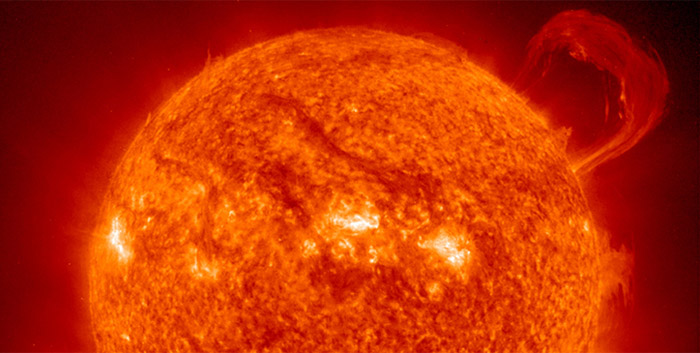Researchers at Purdue University have discovered a possible method of predicting solar flares more than a day before they occur.
The prediction method works by measuring differences in gamma-radiation levels from the decay of radioactive materials. Scientists have long believed the rate of decay to be constant, but that view has been challenged by recent findings. A new hypothesis holds that radioactive decay rates are influenced by solar activity, possibly due to variations in solar neutrinos. The solar influence varies with seasonal changes in the Earth’s distance from the sun and is also affected by solar flares.
Ephraim Fischbach, professor of physics at Purdue University, and Jere Jenkins, director of radiation laboratories at the School of Nuclear Engineering are leading research into the effect that may lead to the development of a new warning system. In 2006, Jenkins was able to detect a slight change in the decay rate of a radioactive sample beginning 39 hours before a large solar flare. Additional evidence appeared last week in an online article published by the journal Astroparticle Physics.
The experimental setup consists of a radioactive source (manganese 54, which decays into chromium 54) and a gamma-radiation detector. Purdue has filed a patent application for the detector concept.
If this concept pans out, it will be an important development for the safety of future space travelers as well as communication and power systems which are affected by solar activity reaching Earth. We don’t think it will eliminate the need for space-based warnings systems, however. In matters this important, it’s best to follow and belt-and-suspenders approach.


Leave a Reply